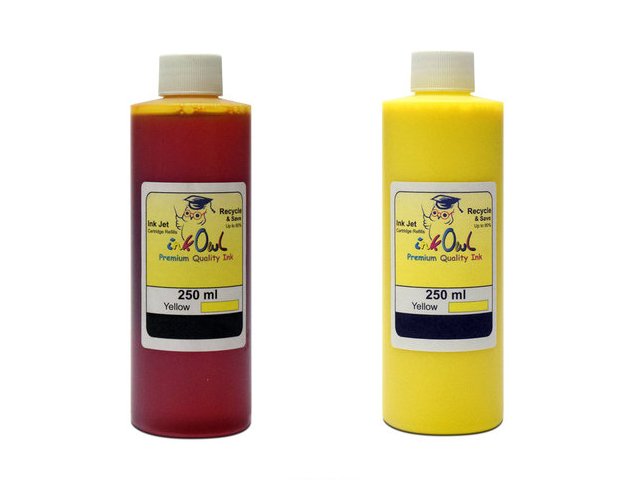We support a lot of printers and specialty applications too. When it comes to inkjet printers, there are two main bases used for ink: Dye and Pigment. However, some printers can also be converted to specialty inks like Sublimation Ink.

Whether you just need to print documents, or you are printing photography, or if you are making custom products, we have the right ink for you and your printer!
Printers are sold by their manufacturer with an intended ink type (generally dye or pigment). Our compatible ink sets will always match the type of ink used by the printer manufacturer to ensure optimal performance and spot-on color match. For this reason, if you prefer to use dye over pigment or vice-versa, it is best to consider the ink setup when buying a printer.
Dye-based inks use soluble colorants mixed into a water-based solution. They are generally relatively inexpensive to produce, and this makes them more affordable than other inks.
The dye stains whatever it encounters making them very versatile and compatible with most-any paper, including glossy papers.
The main drawback to dyes is that since all they do is stain the paper, the prints are prone to smearing and running when wet. Dyes also are not particularly UV resistant. Even the more expensive dye-inks that boast being fade resistant are not appropriate for outdoor printing.
Pigment inks are made up of two parts, the pigment particles (which is essentially a powder) and a carrier solution designed to suspend the pigments once mixed and carry them through the printhead. To do this the liquid solution (usually water-based) must have the same density as the pigments and must have the appropriate viscosity and surface tension needed for a smooth ink flow through the head.
To color the paper, the solution facilitates getting the pigments onto the page then evaporates, leaving the pigments behind, embedded into the fibers of the paper. Because the pigments are present and stuck in the pores of the paper, the prints are naturally UV and smear-resistant and are considered appropriate for archival printing but not quite appropriate for long-term outdoor displays.
The disadvantage pigment inks present is that they do not have the same versatility as dyes do. Pigment inks require a porous surface to print on and this makes many glossy papers inappropriate for pigment inks. For glossy prints, resin-Coated (RC) glossy papers can be used as they maintain a porous surface despite appearing smooth.
Sublimation ink is a pigment ink that uses special pigments with a unique property. These pigments form a chemical reaction with polyester and select other synthetic materials when they are heated up. This reaction allows the pigment to bind with the polyester and permanently color that surface.
To take advantage of this ink’s unique properties, one must print their desired image on a special paper that allows the ink to easily release from it when it’s exposed to heat like our line of sublimation transfer papers. Then, line the print up on something either polyester-based or coated and heat it to enable the ink to transfer to the substrate.
While some printers are sold with sublimation ink, in most cases sublimation requires a printer to be converted to sublimation (for more on that see our conversion guide page). Presently the only printers that can be converted are Epson printers.
Sorry, the page you were looking for wasn't found, please try again later or
refresh